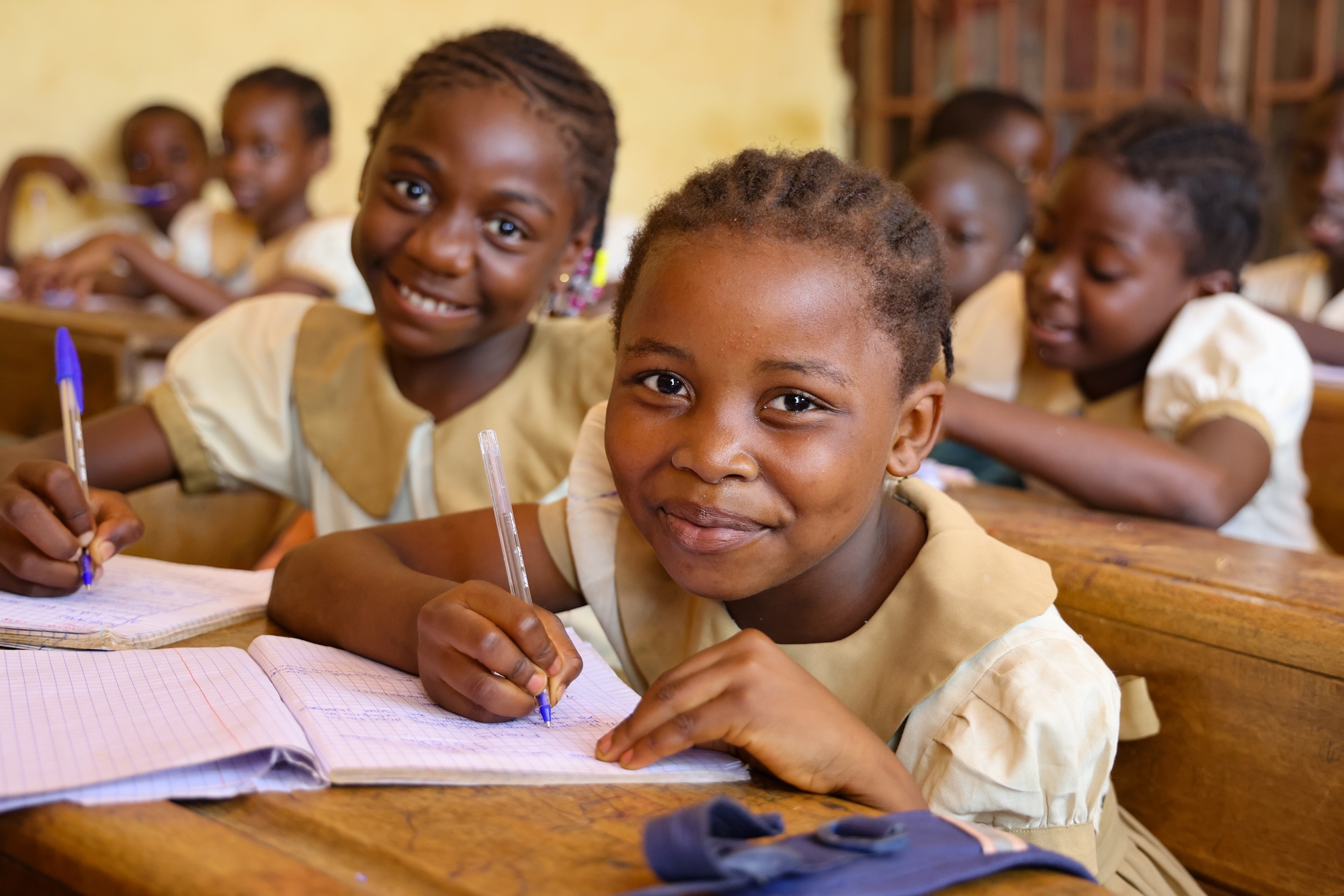News
What you need to know about building strong foundations

Children and young adolescents thrive in the classroom when they are in good health, and learn about their well-being early on. That is why UNESCO established the Building strong foundations initiative which demonstrates its unwavering commitment and support for the education and health of all learners.
What is the Building strong foundations initiative?
The Building strong foundations initiative shines a spotlight on education for health and well-being for learners aged 5-12 in primary school. This period of life is an important phase of cognitive, physical and social development and a window of opportunity to build a holistic understanding of health and well-being, and foundations for the future.
Learning about health and well-being early on in primary school contributes to better education outcomes, child protection and safety from violence and abuse, improved health and well-being, healthy interpersonal relationships, gender equality, and active civic engagement. It also builds on broader foundational learning through the development of transferable skills.
How can it be actioned in countries?
Under the banner Building strong foundations, a set of briefs was published jointly by UNESCO and UNICEF to provide evidence-based guidance to ministries of education, curriculum developers, policy-makers, school management, educators and other stakeholders. The briefs describe what foundational education for health and well-being is, how to design content, how to involve the whole school and how to put this work into practice in the classroom.
These briefs aim to help children learn about health and well-being, equipping them with the knowledge and skills needed to navigate their evolving needs and build strong foundations for healthy and thriving lives.
What does this initiative mean for learners and schools?
In primary school, learners aged 5-12 face evolving and age-specific health and well-being needs that open a window of opportunity to advance our children’s education, health and futures.
In parallel to various cognitive, neurological, social-emotional and physical developments, socio-cultural norms and the overall context, family and school environments also impact the health and well-being needs of children aged 5-12. For example, the onset of puberty may cause emotional stress alongside physical changes. This may be exacerbated by difficulties at home, peer violence or bullying, abuse, lack of nutrition and physical activity, and increased exposure to digital technologies and online threats which have implications on the mental, physical and emotional health and development of children.
Learning about health and well-being early on has far reaching benefits:
- It contributes to health and well-being at the individual, school system and societal levels.
- It equips children with the knowledge, skills and attitudes that promote health, safety and well-being.
- It enhances children’s concentration, knowledge retention, grades and attendance, but also fosters positive relationships with teachers and peers, leading to more enriching educational experiences.
- It addresses health issues known to hinder school attendance and learning, such as anxiety, malnutrition, diarrhoeal diseases and menstrual health challenges.
- It builds foundations for taking care of one’s own health, and other people’s health, now and into the future – from better protection from violence to fostering healthy and respectful relationships, civic engagement, gender equality, and inclusive practices and behaviours.
- It empowers children gradually to amplify their voice and become active citizens who are able to engage on issues that affect their lives, such as inequality, harmful practices, health and well-being, consent and the right to bodily autonomy, climate change, migration, gender-based discrimination and violence.
Close cooperation with schools, teachers, families and communities is a core approach to achieving these benefits.
How does Building strong foundations build on existing frameworks?
Existing frameworks to which Building strong foundations links to include the Health Promoting Schools initiative by WHO, UNICEF and UNESCO which focuses on various aspects of health in schools (e.g. physical health, nutrition, physical activity, etc.) and includes guidance and global standards and indicators; Happy Schools by UNESCO which emotional and mental well-being, as well as the African Union Continental Strategy on Education for Health and Well-being of Young People. Together, they cover the full spectrum of learners’ health and well-being – across all levels of formal education.
The Building strong foundations initiative complements these frameworks by drawing specific attention to the health and well-being needs of children aged 5-12 in primary school. It demonstrates how common principles from existing frameworks can be applied at primary school level, for example, creating a supportive, inclusive, safe and health-promoting school environment, involving the community and families, and prioritising health and well-being into the educational experience.
What is foundational education for health and well-being?
Foundational education for health and well-being (FEHW) refers to the building blocks of knowledge, attitudes and skills that enable younger learners to navigate their current and future health and well-being needs.
This is an umbrella term that covers a variety of existing education programmes promoting health and well-being at primary schools, such as: life-skills education, social and emotional learning, comprehensive sexuality education, violence prevention education, physical education and nutrition education, among others. It aims to promote a holistic and coordinated approach by highlighting common goals and objectives across varied existing efforts in primary schools.
How does UNESCO work to advance children’s health and well-being?
At UNESCO, inclusive and transformative education starts with healthy, happy and safe learners. Because children and young people who receive a good quality education are more likely to be healthy, and those who are healthy are better able to learn and complete their education.
Guided by the UNESCO Strategy on education for health and well-being, UNESCO works to improve the physical and mental health, well-being and education outcomes of all learners.
By reducing health-related barriers to learning, such as gender-based violence, bullying and discrimination, mental health concerns and malnutrition among others, UNESCO, together with governments and school systems, empowers learners to understand their rights, learn better and lead thriving lives.









